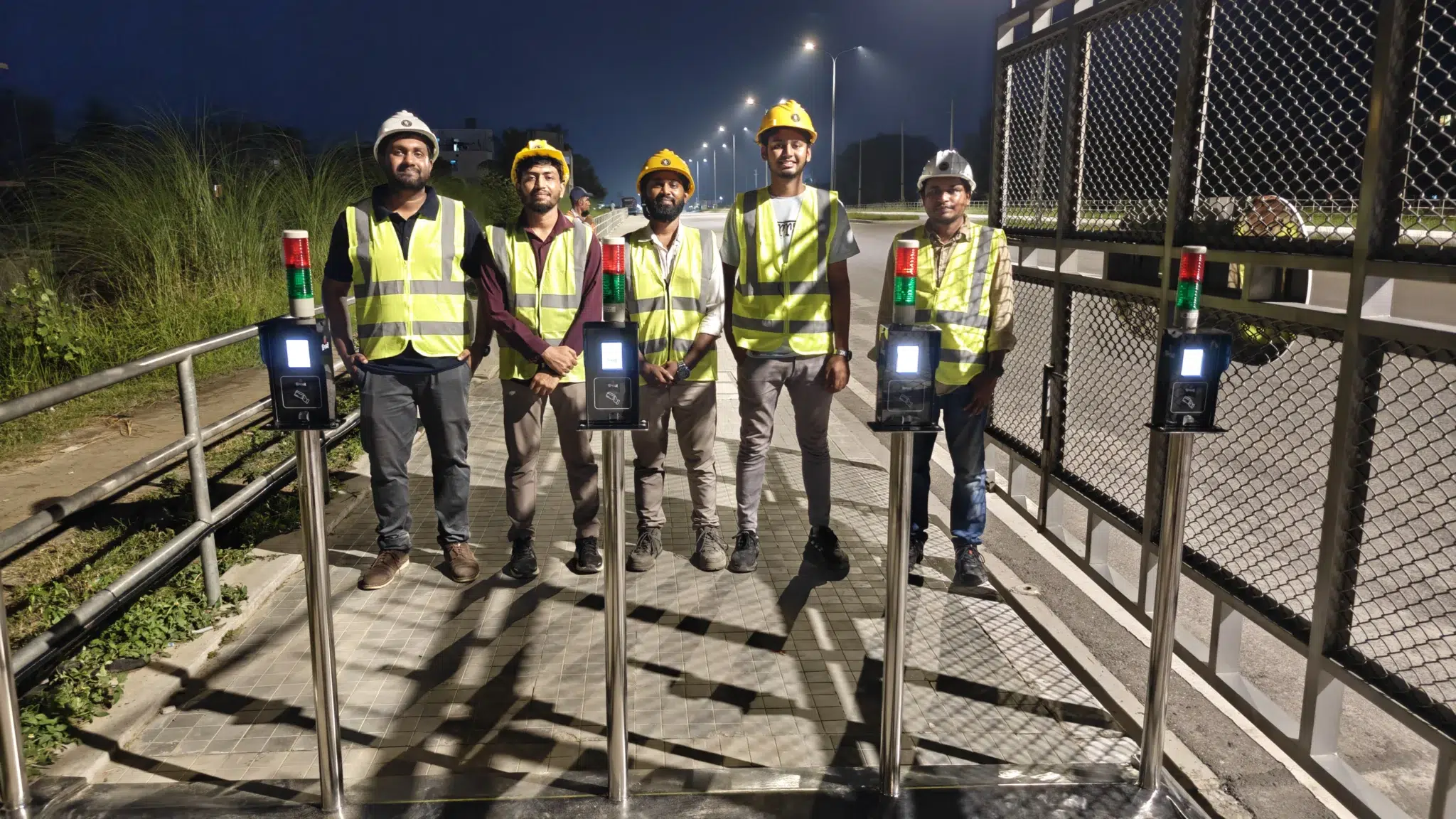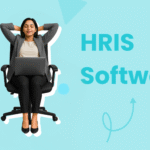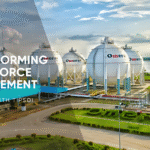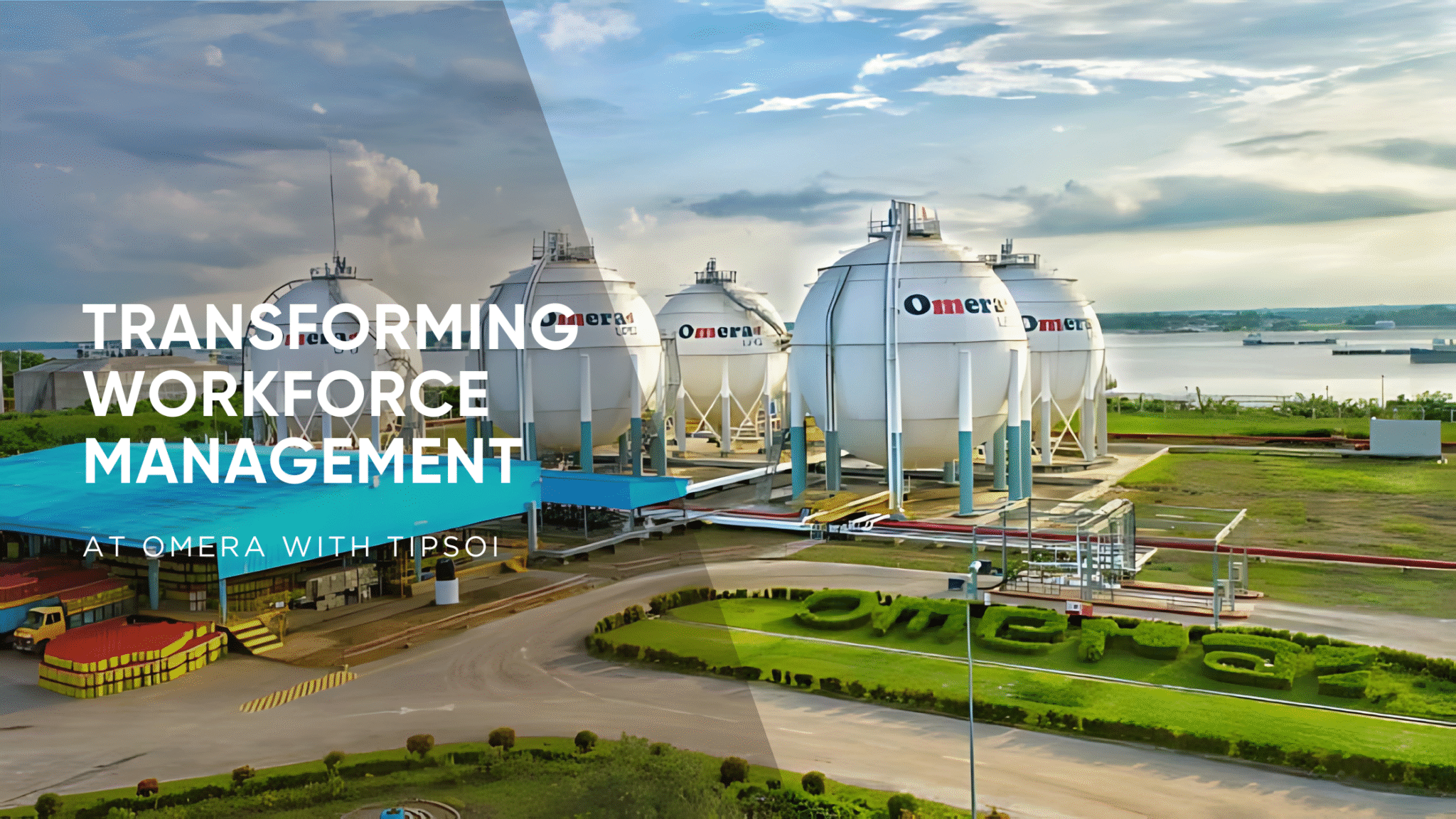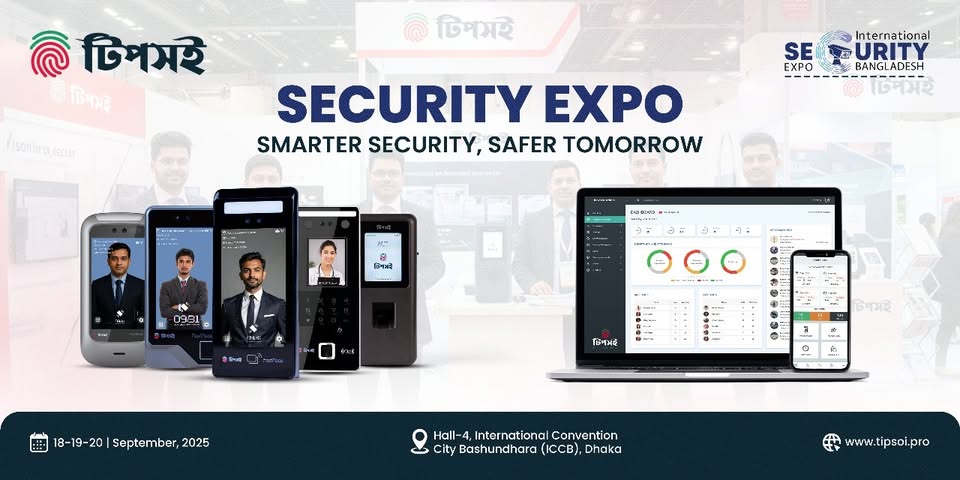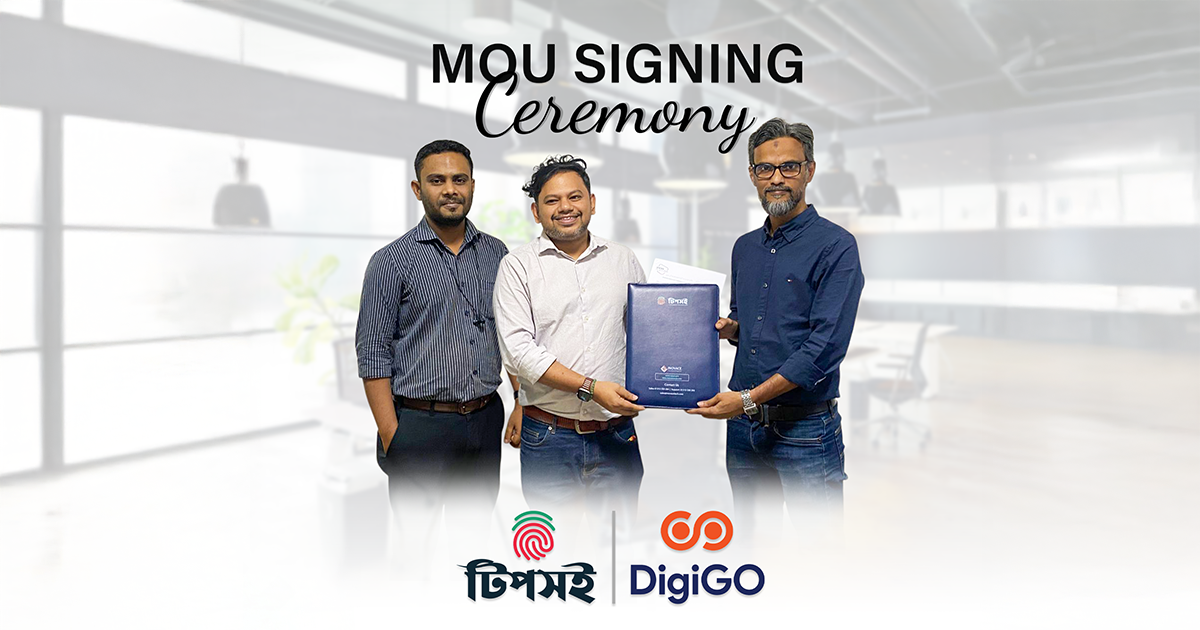EXECUTIVE SUMMARY
Challenge: Bangladesh Special Economic Zone (BSEZ) needed to secure 469.5 acres with 4,500+ daily employees, hundreds of visitors, and thousands of vehicles using outdated manual systems prone to delays and security gaps.
Solution: Tipsoi deployed a three-layer automated access control system: RFID employee tracking, QR-based visitor management, and UHF vehicle verification—all integrated with centralized HRM software.
Results:
- Employee access: 4,000+ workers processed in 30-40 minutes (previously hours)
- Security: Real-time tracking eliminated unauthorized entries
- Visitor management: Zero paperwork errors with automated QR verification
- Vehicle control: Complete audit trail of all vehicle movements
Key Innovation: Custom power management using street lamp electricity + IPS backup enabled 24/7 operation despite limited daytime power availability.
Bangladesh Special Economic Zone (BSEZ) today stands as one of the country’s most advanced industrial hubs. It is not just about land and factories—it is about trust, modern facilities, and world-class security. That’s why both local entrepreneurs and global investors see BSEZ as a reliable base to run operations smoothly.
One of the zone’s flagship promises is “Japan Quality in Bangladesh”. This initiative reflects a deep collaboration between Bangladeshi and Japanese engineers, contractors, and security experts. The result is a powerful mix of industrial growth, cutting-edge engineering, and unmatched safety standards.
According to industry implementation data, securing industrial facilities over 400 acres requires a three-layer approach: automated employee access control (RFID/biometric), real-time visitor management systems with QR verification, and UHF-based vehicle tracking. Modern facilities can process 4,000+ workers in under 40 minutes when these systems are properly integrated, compared to 2-3 hours with manual methods. The minimum infrastructure includes weatherproof access points, backup power systems, and centralized HRM software for real-time monitoring.
From world-recognized companies like Singer and Beko to modern utilities such as water and sewage treatment plants, smart telecommunications, flood protection systems, and reliable electricity, BSEZ is built to global standards. Spread over 469.5 acres, this industrial hub is silently powering the nation’s growth while keeping safety and security at its core. BSEZ access control system has become a benchmark for industrial safety and workforce management in Bangladesh.
Security Challenge: The Need for Smarter Security at BSEZ
BSEZ is a hub of constant movement—thousands of workers, visitors, and vehicles flow in and out of the zone every single day. Managing security across nearly 470 acres is not only complex but also critical for ensuring smooth industrial operations.
Manual vs. Automated Access Control: The Data
Research from industrial security implementations shows that manual attendance systems create 300-400% longer processing times and 15-20% error rates in workforce tracking. Traditional paper-based visitor logs are 8x more vulnerable to unauthorized entries compared to QR-based digital systems. For facilities managing 4,000+ daily entries, automation reduces security incidents by 65% while cutting entry processing time from hours to minutes.
Until recently, the zone relied on manual attendance systems and paper-based visitor logs to track daily entries. This traditional process was slow, error-prone, and vulnerable to security risks. For example, verifying attendance for 4,000+ workers by hand created long queues, delays, and mistakes that directly affected productivity.
Visitor records were managed in Google Sheets a day before their arrival, but last-minute changes often caused confusion at the gates. Similarly, vehicle checks were done manually, leading to bottlenecks and occasional unauthorized entries slipping through unnoticed.
These inefficiencies highlighted a serious gap—BSEZ needed a modern, automated attendance and access control solution that could ensure security, improve workforce efficiency, and eliminate human error.
The Tipsoi Solution: Security Made Simple, Smart, and Seamless
Managing nearly 470 acres of industrial activity with thousands of employees, visitors, and vehicles moving in and out daily is no easy task. BSEZ realized that manual, paper-based systems could no longer keep up with the pace and scale of operations. That’s when they partnered with Tipsoi, Bangladesh’s leading provider of biometric attendance and access control solutions.
The goal was clear: replace outdated manual processes with a fully automated, reliable, and user-friendly access control system designed specifically for BSEZ’s unique challenges. Tipsoi combined its expertise in attendance management software and smart access solutions to deliver a secure, efficient, and scalable setup.
With this transformation, BSEZ took a big leap forward—security became not just stronger, but also smoother, faster, and seamlessly integrated into daily operations.
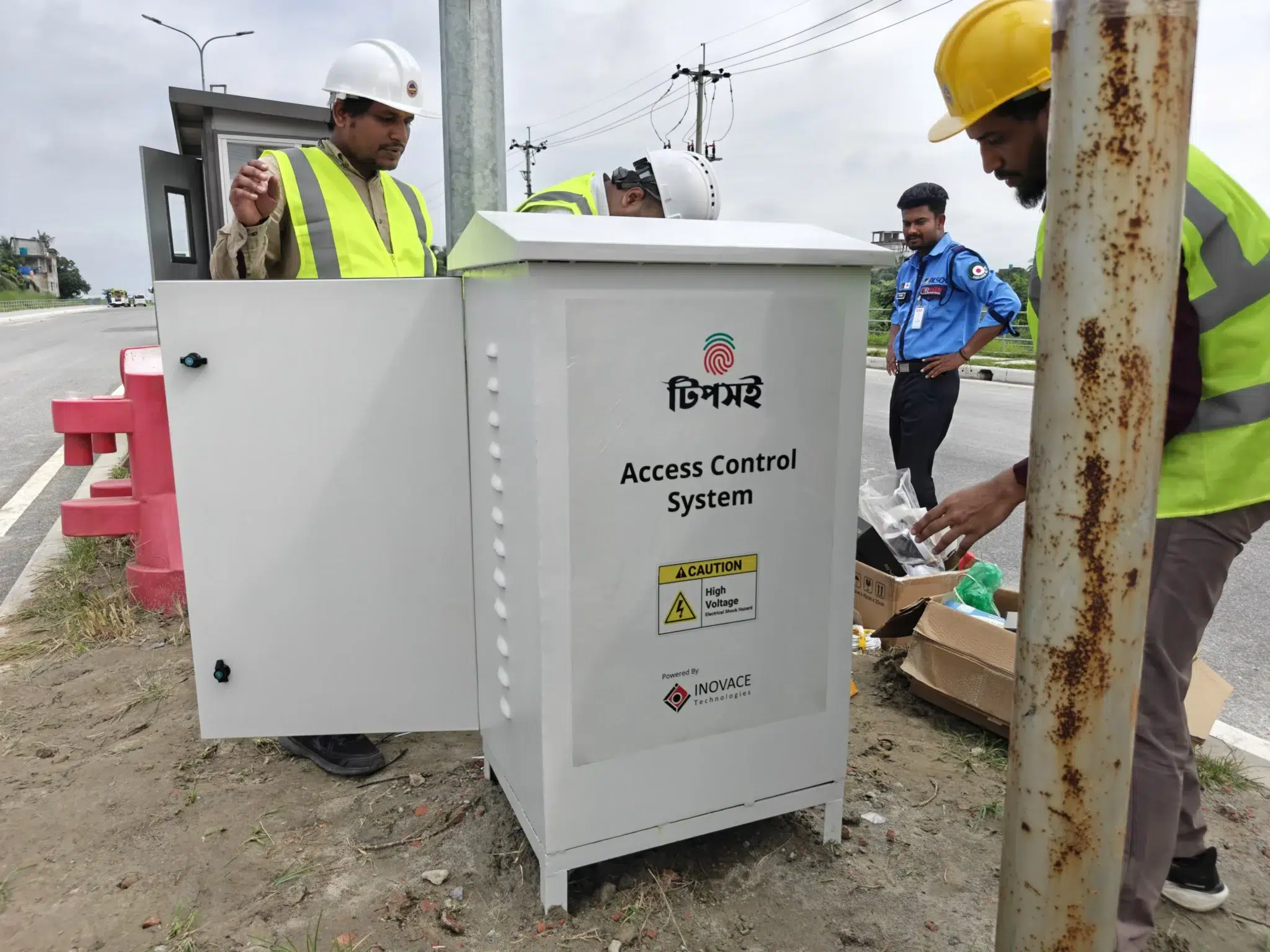
Access Control System Components: What You Need
A complete industrial access control system for 400+ acre facilities requires: (1) RFID/biometric readers at entry points, (2) Intelligent Power Supply (IPS) with 12-24 hour battery backup, (3) Centralized HRM software for real-time data syncing, (4) UHF antennas for vehicle tracking (10-12 meter range), (5) Weatherproof infrastructure rated for outdoor industrial environments. Implementation typically takes 6-8 weeks for full deployment across multiple access points.
Investment and ROI: Understanding Access Control System Costs
Industrial access control system costs for 400+ acre facilities typically range from $50,000 to $200,000, depending on infrastructure complexity and scale. Core expenses include RFID/biometric devices ($500-1,500 per lane), UHF vehicle tracking systems ($3,000-8,000 per access point), weatherproof infrastructure (steel lanes, kiosks: $10,000-30,000), power backup systems (IPS units: $800-2,000 each), and HRM software integration ($5,000-20,000). For BSEZ’s 469-acre implementation with four access lanes managing 4,500+ employees and vehicle tracking, the investment delivered ROI within 18 months through eliminating manual labor costs, reducing security incidents, and improving operational efficiency.
Choosing an industrial access control system requires evaluating six critical factors: (1) Facility size and number of daily entries—facilities with 1,000+ workers need RFID over biometric for speed, (2) Power availability—areas with limited electricity require IPS backup systems, (3) Environmental conditions—outdoor systems need IP65+ weatherproof ratings, (4) Integration requirements—ensure compatibility with existing HRM/ERP software, (5) Scalability—system should accommodate 20-30% growth without infrastructure overhaul, (6) Vendor support—look for providers with 24/7 technical support and local maintenance capabilities. BSEZ selected Tipsoi’s solution specifically because it addressed the unique power challenge (using street lamp electricity for nighttime charging) while integrating seamlessly with their existing workforce management systems.
Access Control System Architecture: 3-Layer Security for Industrial Facilities
Modern industrial access control requires three integrated security layers:
Layer 1: Employee Access Management
RFID-based authentication for high-volume workforce entry (100-150 employees/hour per lane), real-time attendance tracking, and seamless HRM integration.
Layer 2: Visitor Verification System
QR code pre-registration, mobile scanning devices, automated guest logging, and host company notification—eliminating manual paperwork and security gaps.
Layer 3: Vehicle Access Control
UHF-based automatic vehicle identification (10-12m detection range), authorization verification, and complete movement audit trails for all incoming/outgoing vehicles.
This three-layer approach provides 360° security coverage—BSEZ’s implementation demonstrates how all three layers work together across 469 acres with 4,500+ daily workers, hundreds of visitors, and thousands of vehicle movements.
Custom Employee Access Control for Enhanced Security
RFID attendance systems deliver five major benefits for factories: (1) Speed—process 100-150 employees per hour per lane vs. 20-30 with manual methods, (2) Accuracy—99.9% error-free tracking eliminates buddy punching and manual recording mistakes, (3) Real-time data—instant sync with HRM software provides live workforce visibility for management decisions, (4) Durability—RFID cards withstand industrial environments better than biometric systems affected by dirt/gloves, (5) Scalability—easily expand from one to multiple access points without system redesign. BSEZ’s RFID implementation using TF-80 devices reduced morning entry time for 4,500 workers from hours to just 30-40 minutes while providing management with real-time attendance dashboards.
Every morning, around 4,500 employees need to enter BSEZ premises—a massive challenge considering the limited electricity supply in the access area. Street lamps provide power only from 6 p.m. until dawn, leaving daytime operations without direct electricity.
To overcome this, Tipsoi designed a BSEZ access control system using RFID-enabled TF-80 devices paired with smart RFID card readers. They also installed Intelligent Power Supplies (IPS) and battery backups at charging stations. These stations draw electricity from street lamp lines at night, storing enough power to keep the system running seamlessly throughout the busy morning shifts.
The result? Employees can now enter the premises within 30–40 minutes, without power interruptions or manual delays. This ensures smoother workforce management and a more reliable employee attendance process, even under challenging conditions.
Innovative Visitor Management Solution for Real-Time Tracking
A comprehensive visitor management system must include:
(1) Pre-registration capability—allow hosts to register visitors in advance with automated email notifications,
(2) QR code generation—provide unique, secure digital access credentials,
(3) Mobile verification—portable devices for scanning and verifying QR codes at entry points,
(4) Real-time logging—automatic capture of visitor name, purpose, host company, and entry/exit times,
(5) HRM integration—seamless data sync for security tracking and compliance reporting,
(6) Offline functionality—ability to operate during network outages with data sync when connectivity resumes,
(7) Audit trail—complete searchable history of all visitor movements.
BSEZ’s Tipsoi-powered system transformed their error-prone Google Sheets process into an automated workflow where visitors receive QR codes via email and gain entry in under 30 seconds with complete security verification.
Earlier at BSEZ, visitor information was pre-registered through Google Sheets—a slow, error-prone process that often caused delays and confusion at the gates.
Tipsoi transformed this into a smart visitor management system. Now, when an admin or tenant company registers a visitor, the system generates a unique QR code that is automatically emailed to the visitor, the tenant, and the admin.
On arrival, visitors simply show the QR code at the gate. Security guards use Tipsoi’s Fast Face Go portable device—equipped with a camera, SIM-based internet, and battery backup to scan the code. The system instantly verifies access rights, logs the entry in real-time, and ensures only authorized visitors are allowed. All visitor details including their name, purpose of visit, and the tenant company they are meeting are automatically stored in the HRM software for smooth tracking.
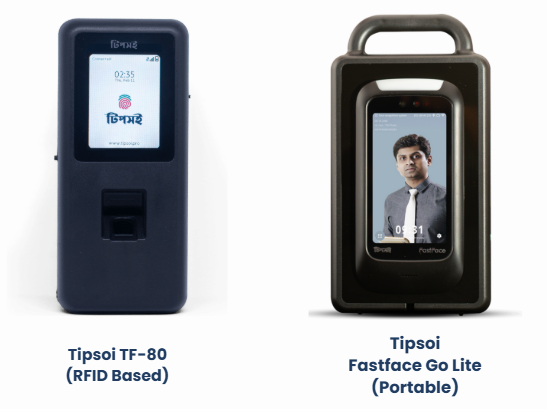
This upgrade means faster check-ins, zero paperwork errors, and a much tighter layer of access control across BSEZ’s sprawling premises.
Before: Manual spreadsheets, errors, and delays.
After: QR-based entry, real-time logs, and secure visitor tracking.
Efficient Vehicle Access Control for Automated Security
Managing thousands of vehicles daily in a 470-acre zone like BSEZ is a major security challenge. Manual verification was not only slow but also left room for unauthorized entries.
Tipsoi solved this with a custom UHF-based vehicle access system. Every authorized vehicle gets a BSEZ-branded UHF sticker with a unique ID. As a car approaches an entry point (within 10–12 meters), strategically placed UHF antennas instantly verify its registration and authorization.
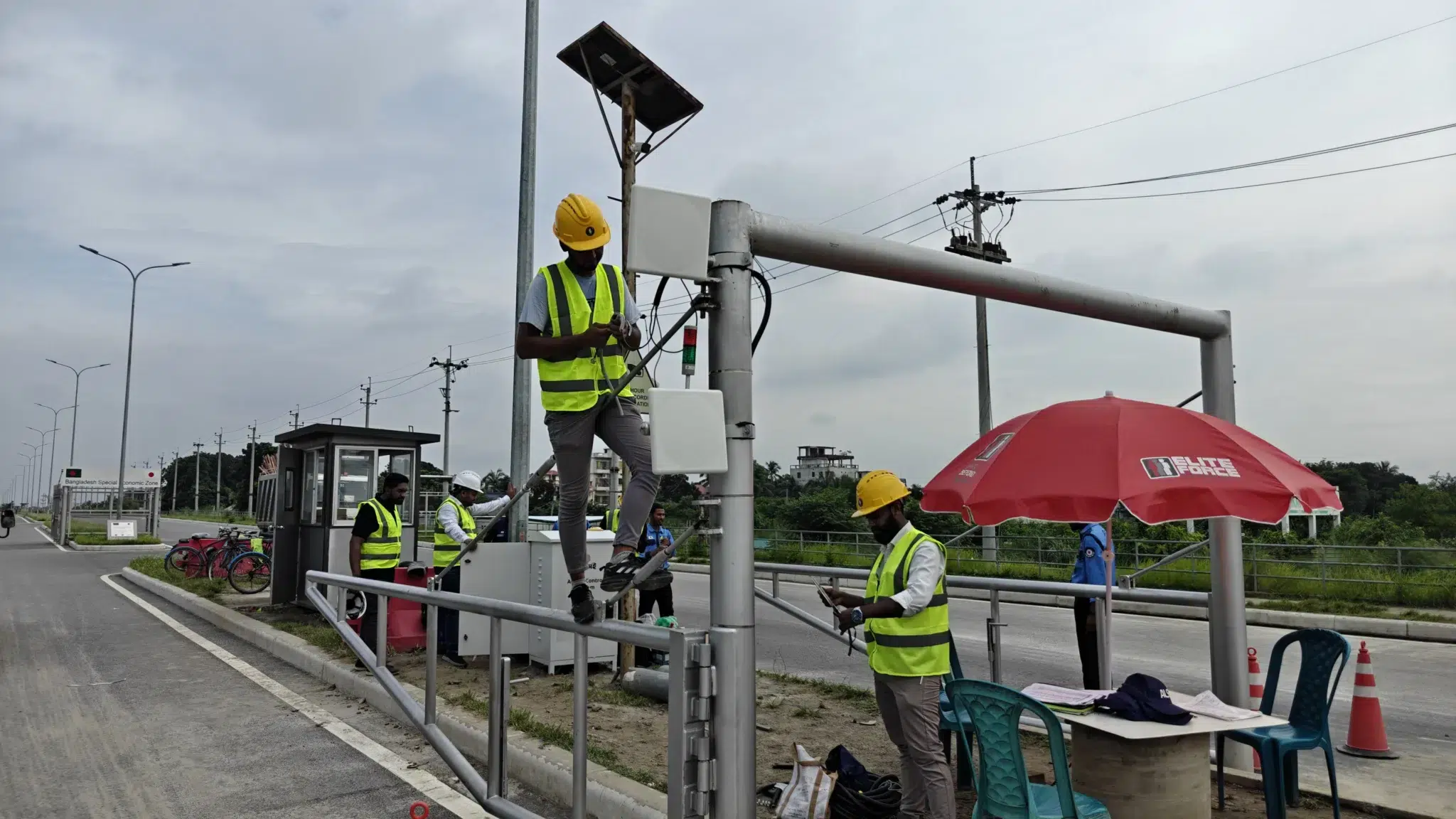
The system doesn’t just open gates—it also records complete details including the vehicle number, owner information, entry/exit times, and the tenant company associated with the vehicle. This information is automatically synced with Tipsoi’s HRM software, giving BSEZ full visibility over vehicle movement across the zone.
Since UHF antennas consume high power, Tipsoi installed industrial-grade Intelligent Power Supplies (IPS) to keep them running smoothly, alongside backup routers and CCTV support. This ensures uninterrupted and reliable vehicle access control, even in high-traffic hours.
The result? Faster entry, fewer errors, and world-class vehicle security that matches BSEZ’s industrial standards.
Implementation Process: Built Tough for Real-World Needs
Deploying Tipsoi’s solutions at BSEZ wasn’t just about advanced technology—it was about adapting security to real-world industrial challenges. Everything had to work seamlessly outdoors, withstand Bangladesh’s weather, and handle the daily rush of thousands of people and vehicles.
To make this possible, Tipsoi designed robust, weatherproof infrastructure for every access point. Four steel lanes were built, each equipped with access control devices inside glass panels and stainless steel kiosks, ensuring both durability and a professional look. Since large-scale digging wasn’t allowed, all wiring was routed safely underground, keeping the area organized and hazard-free.
Smart Power Setup for Continuous Operation
Because electricity in the access area is only available at night, Tipsoi installed multiple Intelligent Power Supplies (IPS) with heavy-duty batteries. These charge during nighttime and power the entire system during the busy daytime.
Industrial IPS units were also deployed to support UHF antennas, backup routers, and CCTV cameras, ensuring all systems stay reliable without interruption. To keep everything safe, charging stations, sockets, and backup systems were placed inside custom-built, weatherproof boxes along the footpaths.
The whole setup was designed to be hands-off and hassle-free, blending into the industrial environment while quietly ensuring 24/7 reliability.
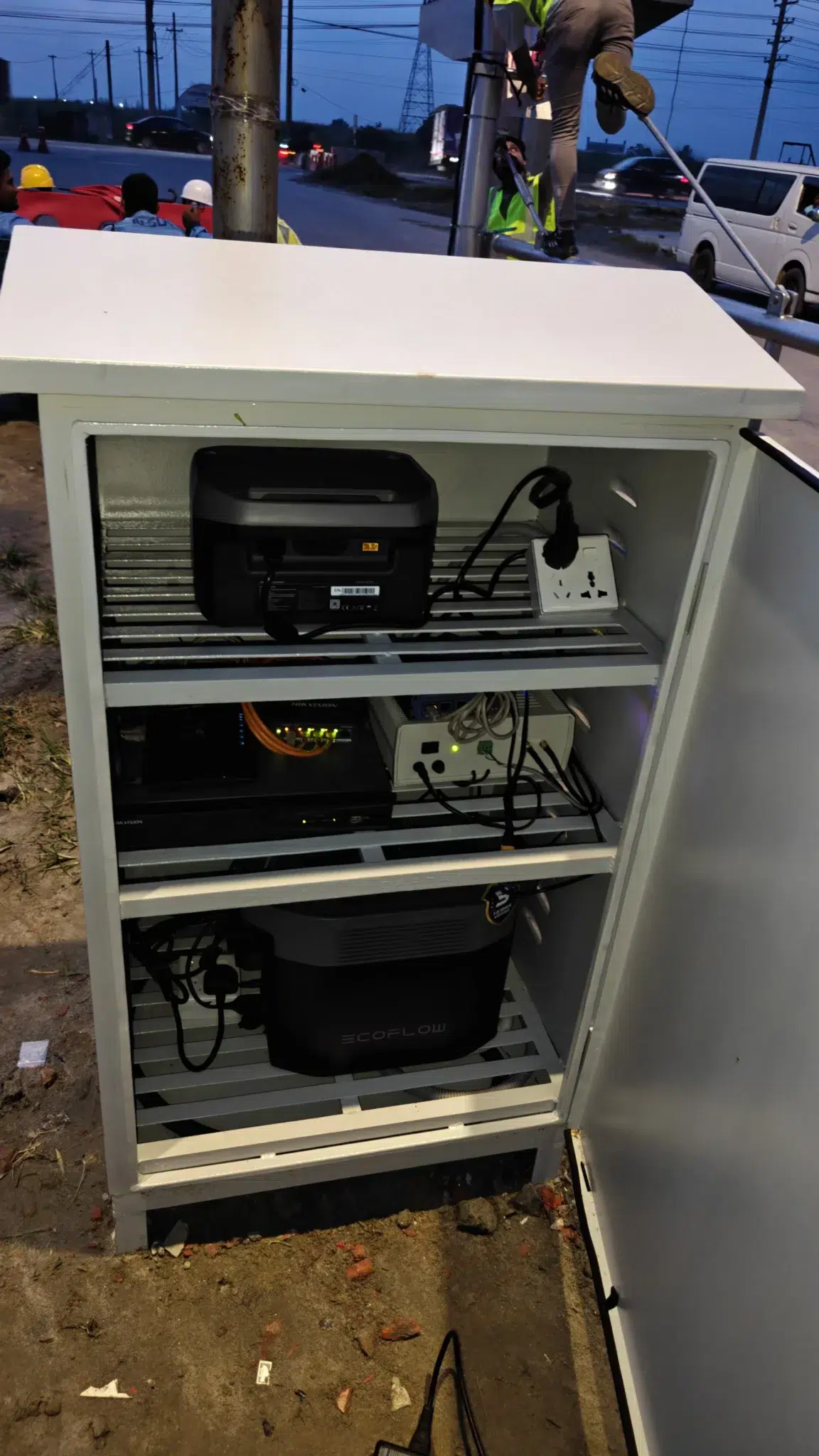
Timeline: From Planning to Full Operation
Complete access control system installation for industrial facilities takes 6-8 weeks on average, broken down into four phases:
(1) Planning and site assessment—1 week to map access points and power infrastructure,
(2) Infrastructure construction—2-3 weeks for steel lanes, kiosks, underground wiring, and weatherproofing,
(3) Device installation and configuration—1-2 weeks for RFID readers, UHF antennas, IPS systems, and network setup,
(4) Software integration and testing—1-2 weeks for HRM system connection, user training, and live testing.
For BSEZ’s 469-acre facility with four access lanes, a complete employee, visitor, and vehicle management system deployment was completed within a 6-8 week timeline despite the additional challenge of custom power infrastructure using street lamp electricity for battery charging.
KEY TAKEAWAYS: Industrial Access Control Implementation
System Requirements for 400+ Acre Facilities:
- ✅ Employee Access: RFID readers + 12-24hr battery backup (process 4,000+ workers in 30-40 min)
- ✅ Visitor Management: QR-based verification with portable scanners + real-time HRM sync
- ✅ Vehicle Control: UHF antennas (10-12m range) + unique vehicle ID stickers
- ✅ Power Infrastructure: Multiple IPS units + nighttime charging + industrial backup systems
- ✅ Weather Protection: IP65+ weatherproof kiosks + underground wiring + corrosion-resistant materials
Implementation Timeline: 6-8 weeks for complete deployment
Security Improvement: 65% reduction in unauthorized entries
Efficiency Gain: Entry processing time reduced from hours to minutes
ROI Factor: Eliminates 95% of manual tracking errors + provides real-time audit trails
Results: Smoother Security, Happier People
The impact of Tipsoi’s access solutions at BSEZ was immediate and visible.
- Tighter Security: Unauthorized entries dropped sharply, and admins could instantly see who was inside the zone at any given time.
- Faster Employee Access: With RFID and IPS backup, over 4,000 employees could enter within 30–40 minutes during peak hours—no bottlenecks, no confusion.
- Streamlined Visitor Entry: Visitors pre-registered with QR codes enjoyed quick, hassle-free access. Their full details—name, company, and meeting purpose—were auto-synced to the HRM software in real-time, saving hours of manual effort.
- Vehicle Management: The UHF system cut out manual checks. Only authorized cars were allowed in, and every entry and exit was logged for transparency.
Overall, Tipsoi turned BSEZ’s manual, error-prone system into a smart, automated access control ecosystem—one that saves time, improves trust, and strengthens BSEZ’s image as a safe, world-class industrial hub.
How long does it take to implement an access control system for a large industrial zone?
Implementation of a comprehensive access control system for facilities over 400 acres typically takes 6-8 weeks. This includes infrastructure setup (steel lanes, weatherproof kiosks, underground wiring), power system installation (IPS units and battery backups), device configuration (RFID readers, UHF antennas, QR scanners), and software integration with HRM systems. BSEZ’s 469-acre implementation included four access lanes with complete employee, visitor, and vehicle management capabilities deployed within this timeframe.
What is the difference between RFID and biometric access control for factories?
RFID access control uses contactless cards/tags that employees scan at entry points, processing 100-150 people per hour per lane with 99.9% accuracy. It works in harsh industrial environments and requires minimal maintenance. Biometric systems (fingerprint/face recognition) offer higher security by verifying actual identity but process 40-60 people per hour and can be affected by dirt, gloves, or environmental conditions. For large factories with 4,000+ workers, RFID systems like BSEZ’s TF-80 devices paired with smart card readers provide the optimal balance of speed, reliability, and security.
How much power does an industrial access control system consume?
UHF-based vehicle access systems consume the highest power (industrial-grade IPS required), while RFID employee readers are power-efficient enough to run on battery backup for 12-24 hours. For facilities without continuous electricity, strategic power management is critical—BSEZ’s system uses street lamp electricity (6 PM to dawn) to charge IPS units that power all access devices during daytime operations. A complete 4-lane access system typically requires 4-6 IPS units with battery backup plus additional industrial IPS for UHF antennas and networking equipment.
Can access control systems work without internet connectivity?
Yes. Modern access control systems can operate offline with local data storage, syncing to centralized servers when connectivity resumes. BSEZ’s implementation uses SIM-based internet for visitor management devices (Fast Face Go portable scanners) and backup routers for continuous connectivity. RFID employee systems store authentication data locally on devices, allowing entry verification even during network outages. All entry/exit logs are cached and automatically uploaded once connection is restored, ensuring zero data loss.
What are the security benefits of QR-based visitor management compared to paper logs?
QR-based visitor management systems eliminate 95% of manual entry errors and reduce check-in time from 5-10 minutes to under 30 seconds per visitor. Unlike paper logs that can be forged or lost, QR codes are unique, time-stamped, and automatically verified against pre-registered data. The system instantly logs visitor name, purpose, host company, entry/exit times directly into HRM software, providing real-time visibility of who is on premises. This prevents unauthorized entries and creates a complete, searchable audit trail that paper-based systems cannot provide.
How does UHF vehicle access control prevent unauthorized vehicles?
UHF vehicle access systems use unique sticker IDs (one per authorized vehicle) that are detected by antennas from 10-12 meters away. When a vehicle approaches, the system instantly cross-references the UHF ID against the authorized vehicle database—if not registered, access is denied before reaching the gate. Unlike manual checks where guards might miss details, the automated system logs complete vehicle information (number, owner, company affiliation, entry/exit times) with 100% consistency. For a facility like BSEZ handling thousands of daily vehicle movements, this eliminates human error and creates a comprehensive vehicle movement audit trail.
What makes an access control system suitable for outdoor industrial environments?
Outdoor industrial access control requires IP65+ weatherproof rating (dust-tight and water-resistant), corrosion-resistant materials (stainless steel kiosks), temperature tolerance (-10°C to 50°C), and impact-resistant glass panels for device protection. The infrastructure must include underground wiring (to prevent damage), backup power systems for continuous operation, and industrial-grade components that withstand heavy daily use. BSEZ’s implementation features steel lanes with devices housed in weatherproof glass panels and stainless steel kiosks specifically engineered to handle Bangladesh’s monsoon climate and industrial conditions.

